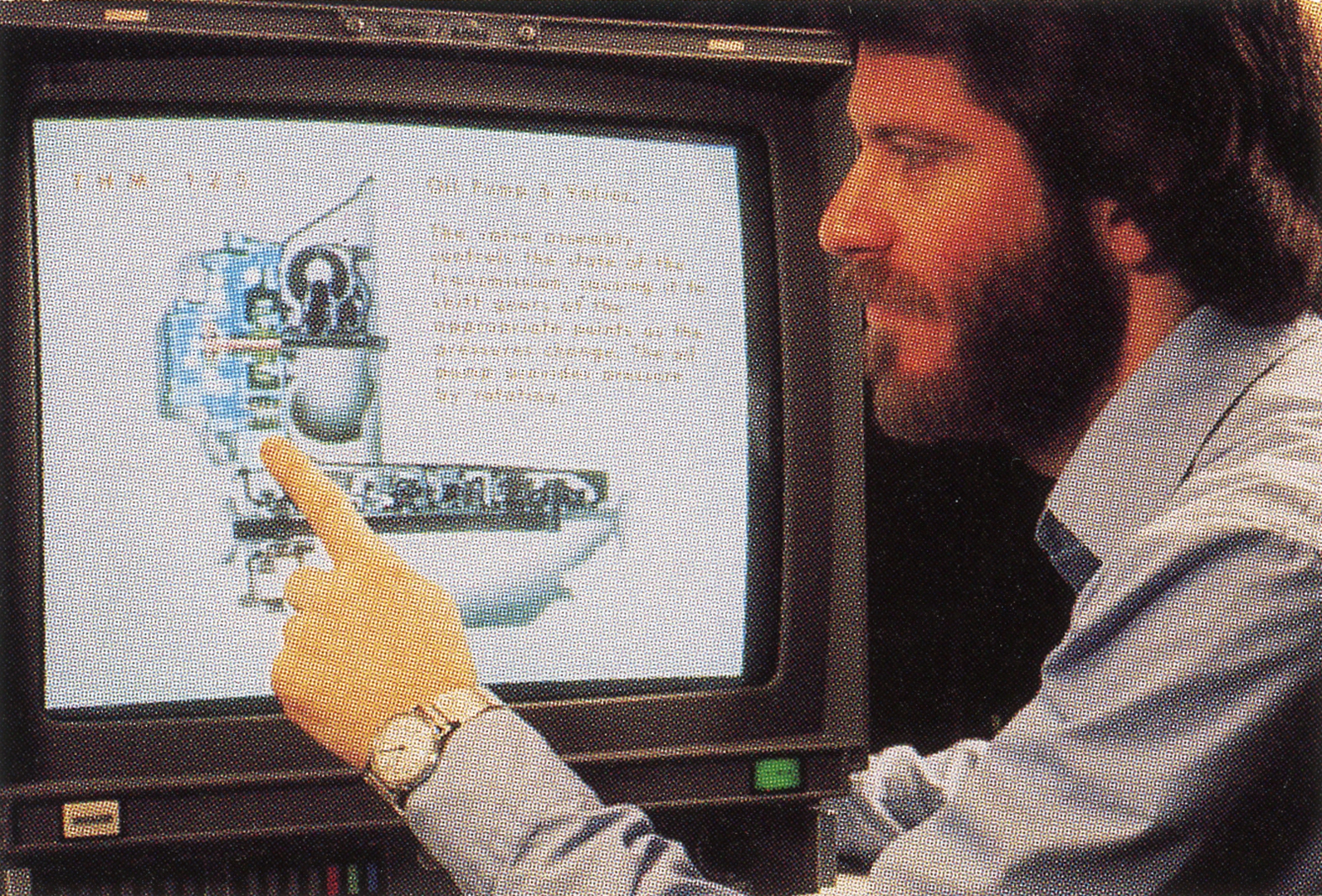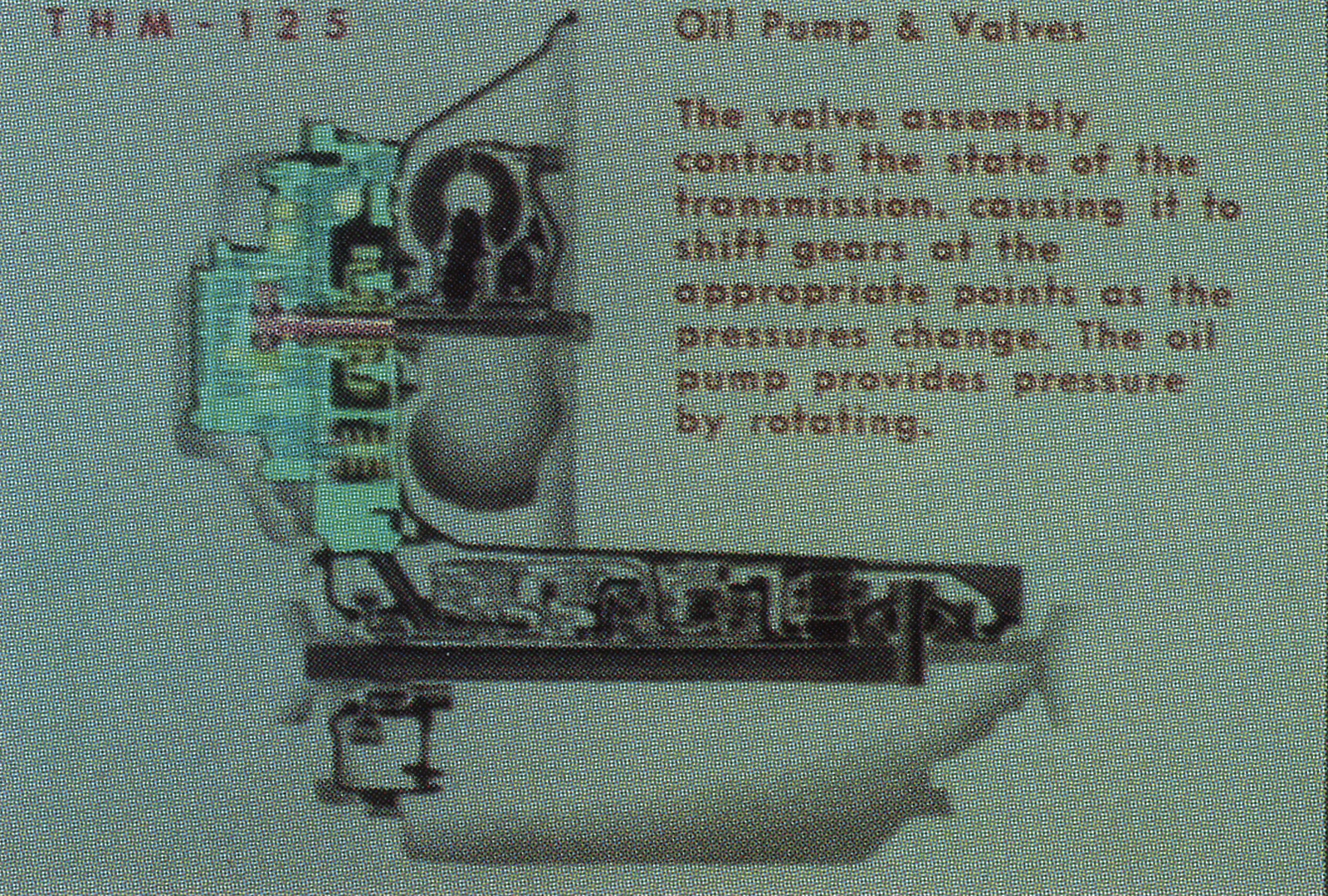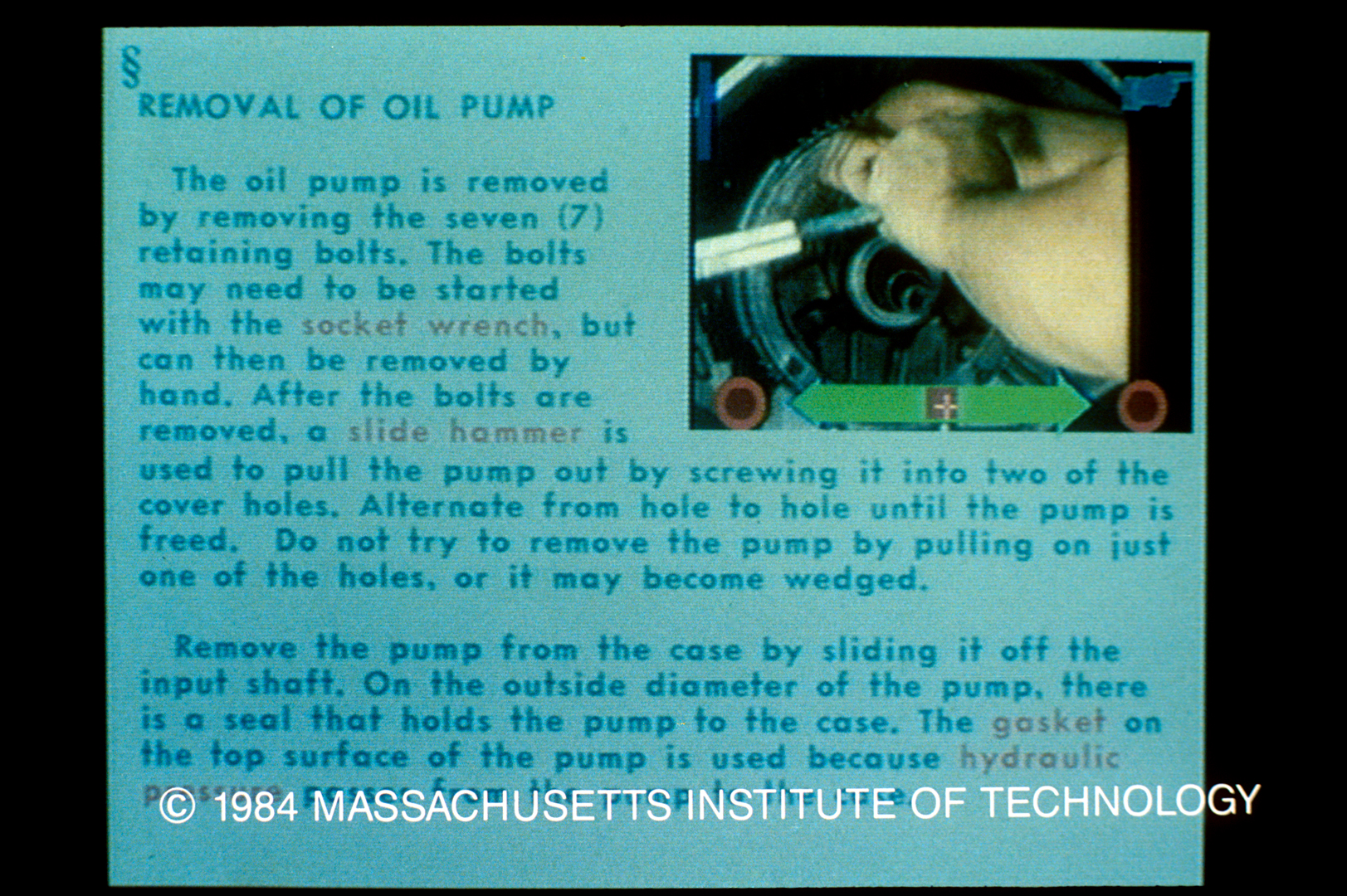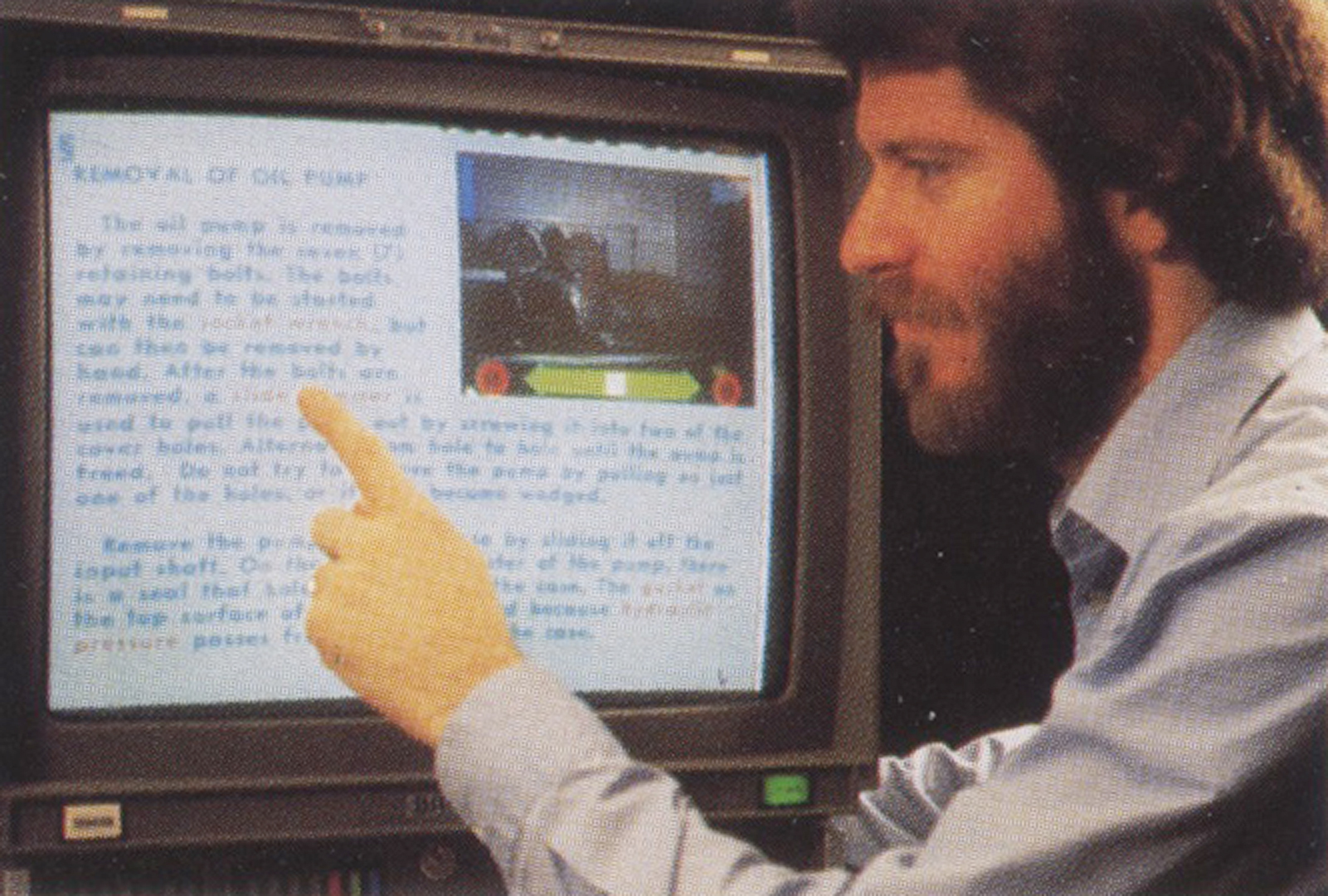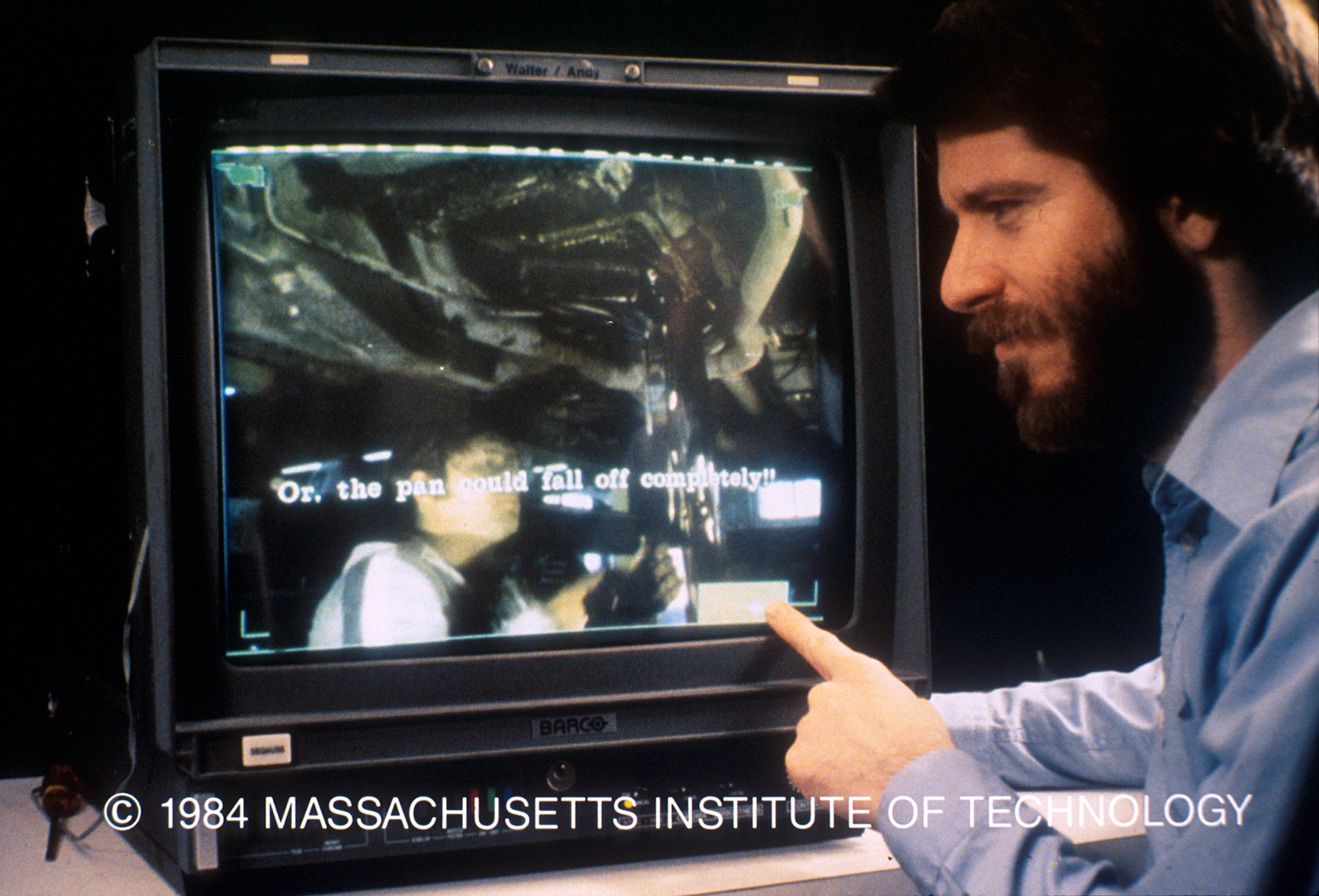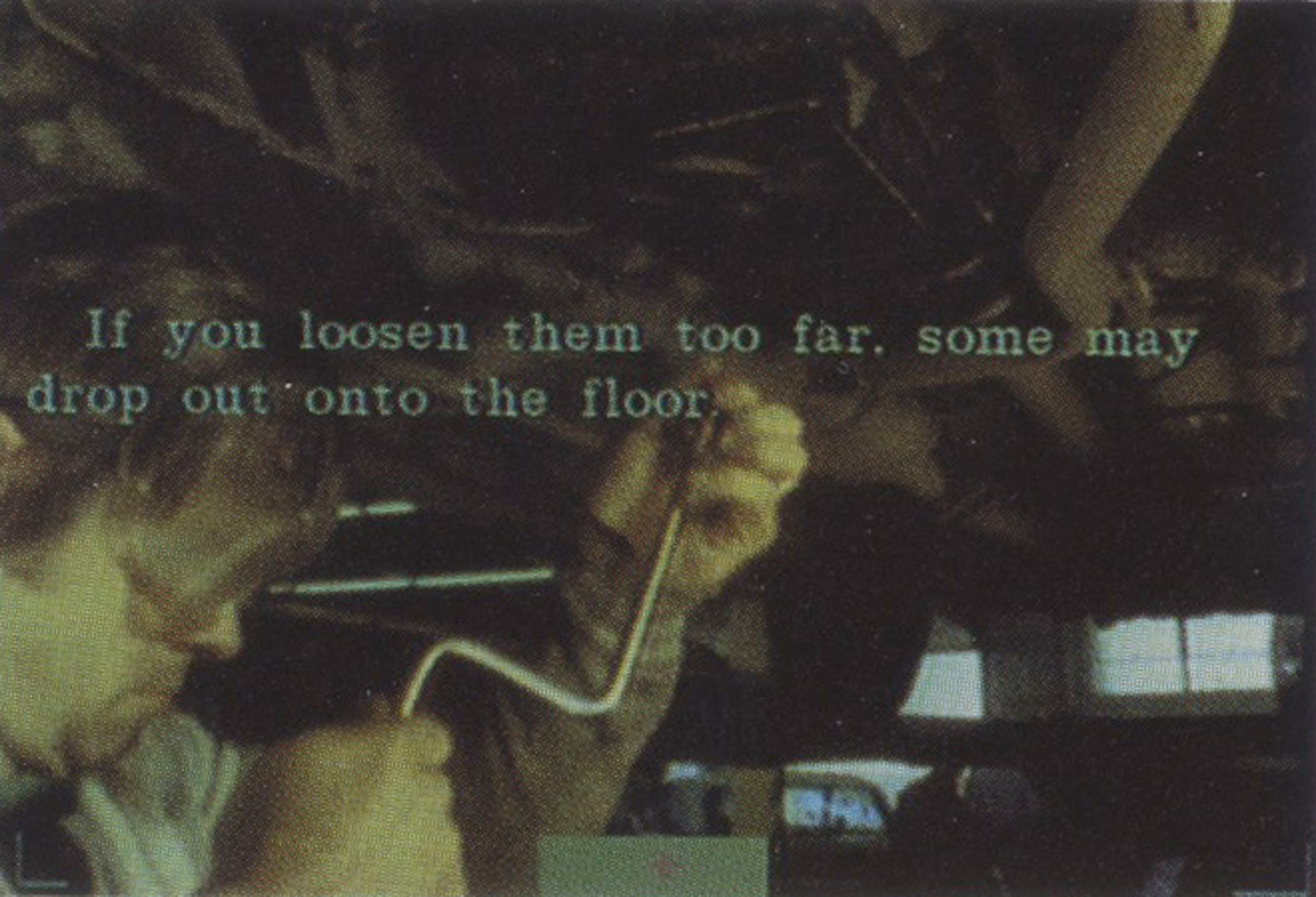Architecture Machine Group: Movie Manual
Artist(s):
Collaborators:
- David Backer
-
- Massachusetts Institute of Technology
Title:
- Movie Manual
Exhibition:
Category:
Keywords:
Artist Statement:
This transmission manual is not an ordinary manual, but a prototypical teaching device that uses the power of computer graphics and computer-controlled video disks for the display of images, movies, text and sound.
The system combines the best qualities of books, movies and computers while overcoming their individual limitations. It is an interactive, branching system that allows the user to pursue any avenue of questioning he likes. More conventional systems are linear, offering only multiple choice alternatives. In this system, the branching is consistent throughout, permitting the user to move anywhere he likes, from a general level of instruction, to one of the finest detail.
Answers from the system may come in the form of projected video pages with images and text; or as more sophisticated moving pictures with sound, animation, and three-dimensional modeling.
Data is stored on an optical video disk as picture, text and sound. Interaction occurs through a touch-sensitive display screen that allows the user to simply touch a part of a picture or text in order to ask for more information and get it instantly.
Technical Information:
Equipment:
Perkin-Elmer 3230
Ramtek 9400 frame buffer
Discovision optical videodisk
Elographics touch-sensitive screen
Color graphics monitors
Software:
P1/1 on Magic 6 operating system
Process Information:
Education
Educational materials have traditionally been limited to linear media like film, video, and print. These materials were designed for limited question and answer interaction, and usually taught a specific body of information. The early design of computer-aided instruction (CAI) emulated this “textbook” instruction. But, recent advances in video games and computer learning programs afford far more interaction and individual pacing that enhance and complement natural learning processes. The responsiveness of the computer, the immediate and individualized testing and feedback capabilities it can provide, demands a new understanding of interaction on the part of the designer.
Affiliation Where Artwork Was Created:
- Massachusetts Institute of Technology
Other Information:
Client:
Office of Naval Research

